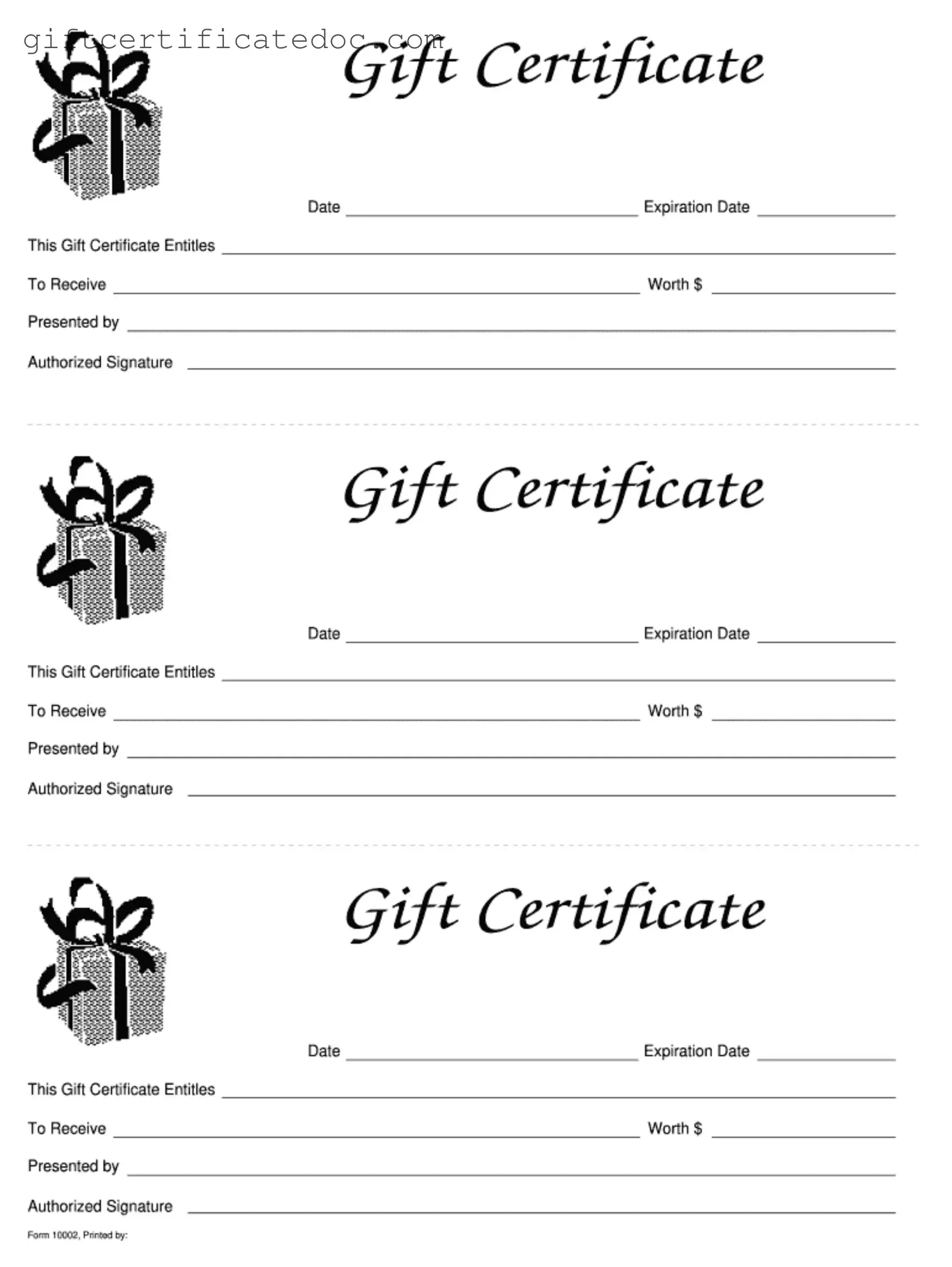Common mistakes
Filling out a Gift Certificate form can seem straightforward, but many people overlook critical details that can lead to confusion or frustration. One common mistake is failing to include the recipient's full name. While it may seem trivial, omitting this information can lead to issues when the certificate is redeemed. Always double-check that the name is spelled correctly and is complete, ensuring that the recipient feels special and recognized.
Another frequent error is neglecting to specify the amount of the gift certificate. Leaving this field blank or writing an ambiguous amount can create misunderstandings later. The recipient deserves clarity about how much they can spend. Clearly stating the amount not only avoids confusion but also enhances the gifting experience.
People often forget to add a personal message. A thoughtful note can elevate a simple gift certificate into a cherished token of appreciation. Skipping this step may make the gift feel impersonal. Take a moment to express your feelings or share a memory; it adds warmth and a personal touch to the gift.
Additionally, selecting the wrong expiration date is a mistake that can lead to disappointment. Some may inadvertently set a date too soon, limiting the recipient's ability to use the certificate. Others might forget to include an expiration date altogether. To ensure the recipient has ample time to enjoy their gift, choose a reasonable timeframe.
Another common pitfall is not reviewing the terms and conditions associated with the gift certificate. Many people overlook these details, which can include restrictions on usage, such as specific locations or products. Understanding these terms ensures that both the giver and the recipient have a clear understanding of how to utilize the certificate effectively.
Lastly, failing to keep a copy of the completed Gift Certificate form can lead to complications. If something goes wrong—like the recipient losing their certificate or having trouble redeeming it—having a record can be invaluable. Always retain a copy for your records, which provides peace of mind and helps resolve any potential issues smoothly.
